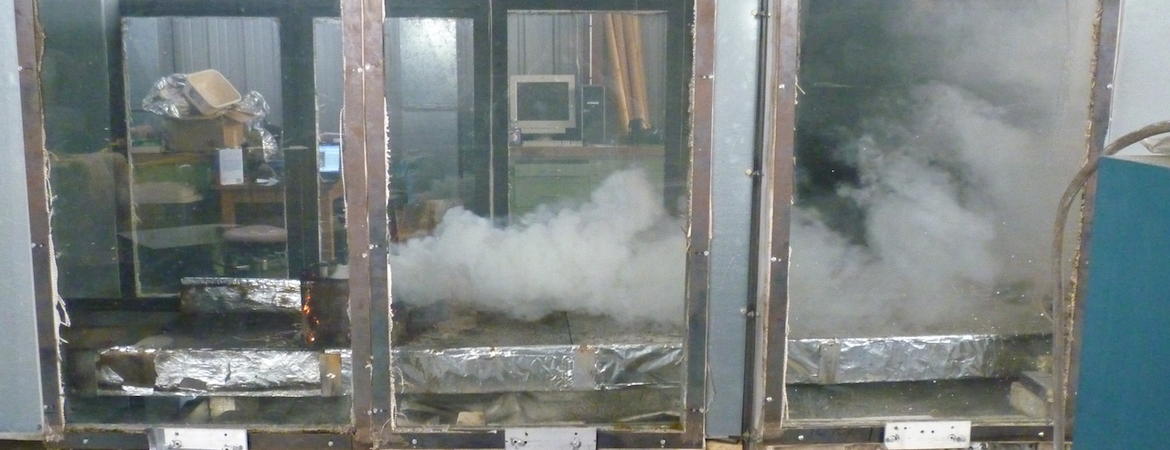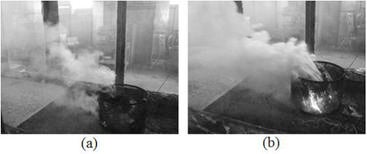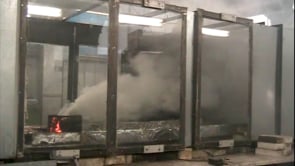
While prescribed fires are common tools in wildland management, a combination of smoke and fog, known as superfog, has in some cases crossed over major roadways, leading to multicar pileups and fatalities in visibility of less than 3 meters.
New research led by the University of California, Riverside, and sponsored by the USDI/USDA Joint Fire Sciences Program, has for the first time produced superfog in a laboratory. With a better understanding of how superfog forms, foresters may be able to add additional criteria in planning future prescribed burns.
The team also identified the smoke particle size distribution and concentration, ambient liquid water content, ambient temperature, ambient relative humidity, fuel moisture content and wind speed that lead to superfog formation. The authors caution, however, that the science of predicting when some of these conditions will be met is still in its infancy.
Fog forms when water molecules condense around microscopic solid particles suspended in the air, somewhat like dew forming around a blade of grass. Particles come from many sources, including dust, vehicle emissions, and smoke. In order for water to condense, the ambient air temperature must be cool enough to become saturated with water vapor introduced by processes like wind, evaporation, or plant respiration. When nearly saturated air blends with smoke and moisture released by smoldering organic materials, a dense, low-lying superfog can form.
Because superfog is uncommon and hard to study naturally, the researchers designed a laboratory setup to explore conditions that create it. They burned wildland fuels, such as pine needles, in an air conditioned, custom-made fire wind tunnel under varying environmental conditions and fuel moisture content.
The team found that when water content is low, particle size needs to be small enough to create droplets no larger than one micron, small enough to fit 50 droplets in the diameter of human hair, to reduce visibility to superfog levels. If the droplets get much bigger than that, they don’t absorb as much light and require more water. Droplet concentrations must be around 100,000 per cubic centimeter, or about 100,000 droplets packed into a volume smaller than two M&Ms. Burning vegetation usually exceeds this amount.
Superfog also requires ambient temperatures less than 4 degrees Celsius or 39.2 degrees Fahrenheit, humidity over 80%, and high fuel moisture content. High fuel moisture content lets more water vapor into the smoke and produces the thickest superfog.
When combined with modeling of other atmospheric conditions that influence the growth and spread of fog, the experiments replicated conditions matching superfog that caused multicar pileups in Florida in 2008 and 2012.
The combination of high humidity and high plant moisture content required to make superfog explains why it occurs mostly in Southern states like Florida and Louisiana rather than California. However, it is still not possible to predict when or where it will occur.
“Now we know what are the proper mixtures of various ingredients that form superfog, but we still do not know how to predict when those ingredients in the right mixture will form due to the combination of atmospheric, fuel, and ground conditions,” said co-author Marko Princevac, a professor of mechanical engineering in the Marlan and Rosemary Bourns College of Engineering at UC Riverside who studies wildfire combustion and behavior. “I believe it is still early to claim that superfog can be predicted with any certainty.”
The paper, “Laboratory and numerical modeling of the formation of superfog from wildland fires,” is published in the June 2019 issue of the Fire Safety Journal. Other authors include first author Christian Bartolome, who conducted some of the research for his doctoral dissertation at UC Riverside; U.S. Forest Service research forester David R. Weise; Shankar Mahalingam, a professor of mechanical engineering and dean of engineering at the University of Alabama in Huntsville; UC Riverside doctoral students Masoud Ghasemian and Henry Vu; and UC Riverside mechanical engineering professors Akula Venkatram and Guillermo Aguilar.
Header photo: Superfog produced in a laboratory setting. Credit: UCR





